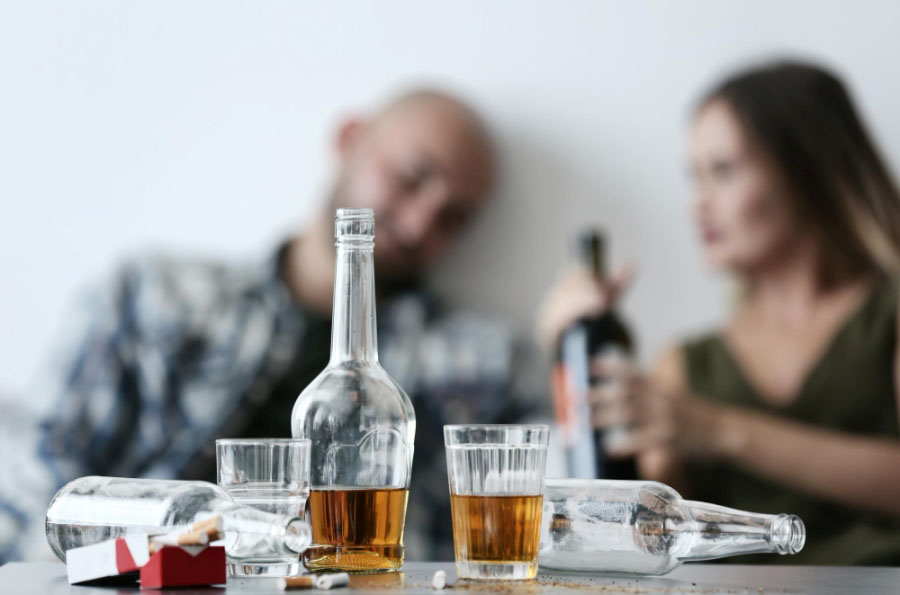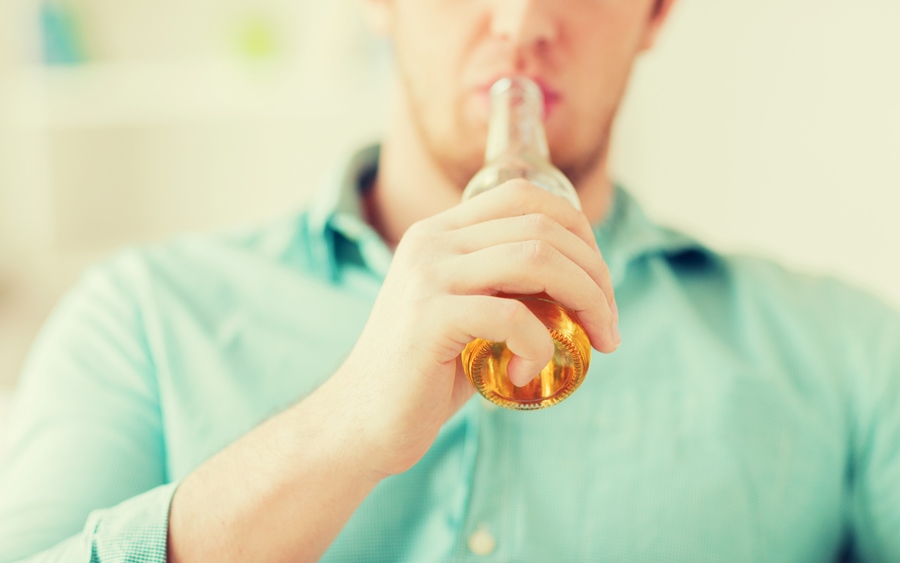It’s important to stay aware of the physical and mental effects of alcohol while drinking. Even after a drink or two, it can start to have light, noticeable effects that impact your judgment and behavior.
A common thing you might wonder about on a night out or after having a few drinks is whether you’re tipsy or drunk. Everyone’s reaction to alcohol is different, so it’s a good idea to know what characteristics to look for and what you should be aware of at each level of impairment to stay safe.
What’s the difference between tipsy vs. drunk? The rest of this article will provide all the information to understand alcohol effects by stage and important elements to consider.
What Does “Tipsy” Mean?
To give you a simple tipsy definition, it means that you’re slightly intoxicated. The word tipsy typically refers to the light, early effects of drinking. Some common signs of being tipsy include:
- Having a light alcohol buzz
- Mild euphoria
- Feeling more sociable or like you can interact with less of a filter
- Relaxed muscles
- Slightly slower reflexes or judgment
Blood alcohol levels and behavior are often connected, so it can be a good number to place with these common signs. Generally, someone who is tipsy will have a blood alcohol concentration (BAC) of 0.02-0.05%.
What Does it Mean to be Drunk?
The word drunk refers to moderate to severe alcohol impairment. It can range from a step up from the effects you feel while tipsy to having your thoughts, reactions, and coordination heavily affected. It’s unsafe to drive, operate heavy machinery, or make important decisions when you’re at this stage.
If you’re wondering how to tell if you’re drunk, here are some common signs to look for:
- Slurred speech
- Poor coordination
- Impaired judgment
- Slow reaction time
- Blurred vision
- Bloodshot or glassy eyes
- Flushed face or sweating
When you aren’t sure if you’re feeling drunk, take a moment to assess your condition. You may start to notice signs like it being hard to walk in a straight line, stand up straight without support, or it taking longer for you to react to things around you.
To give you a number to tell if you’re drunk based on blood alcohol levels, it generally falls in the BAC range of 0.06-0.15% and higher.
The legal BAC limit to drive in the U.S. is 0.08%. However, a lot of studies emphasize that you should use caution with this. For instance, a study published in the Journal of Addiction estimated that driving with a BAC of 0.05% or higher increased the risk of vehicle crashes by 7-21 times.
Being drunk also comes with other risks, such as blackouts, memory loss, injuries, or risky behavior, so it’s a good idea to ask someone you know for help if you aren’t feeling well or take precautions like having a designated driver before going out.
Key Differences Between Tipsy and Drunk
Here’s a quick chart to help you understand the difference between tipsy and drunk:
| Category | Tipsy | Drunk |
| BAC Range | 0.02-0.05% | 0.06% and above |
| Physical Effects | Relaxed and slightly flushed | Slurred speech and poor balance |
| Mental State | Chatty, giggly, and relaxed | Confused, loud, and more emotional |
| Judgment | Mildly impaired | Significantly impaired |
| Risk Factor | Low to moderate | High – Greater chance of accidents and risk taking |
Why the Distinction Matters
Why should you care if you or someone you know is tipsy or drunk? It matters because of the significant differences between the two.
Being tipsy can quickly turn into being drunk when you aren’t paying attention to your physical and mental state or how much alcohol you’re consuming. Just one extra drink can start to change how you’re feeling, affecting your interactions with others and decision-making abilities.
Therefore, make sure you’re paying attention to not just how much you’re drinking but also how you feel. If you’re starting to feel like you’re getting too impaired, it’s okay to slow down or stop drinking, and don’t let anyone pressure you into drinking more if you don’t want to.
Even Just Tipsy Can Lead to Bad Decisions
Remember that even if you are tipsy, your thoughts and actions are still affected. It can still lead to riskier behavior, oversharing, unsafe sex, and other actions that could cause negative consequences.
It’s best to avoid doing anything while tipsy that you should have a clear mind for, such as driving, so make sure you’re taking precautions to remain safe.
When Casual Drinking Becomes a Problem
While alcohol is a common part of socialization, it can lead to problems when you or someone you know is drinking or getting drunk too often.
Frequent drinking can indicate a dependence or addiction to alcohol. Common signs that someone is struggling with an alcohol use disorder include:
- Trying to stop or reduce drinking and not being able to
- Having multiple times where you drank more or longer than intended
- Continuously thinking about drinking or spending a lot of time trying to get more alcohol
- Continuing to drink despite negative consequences from it, such as health issues, relationship problems, or poor performance at work
- Building a tolerance to alcohol, where you have to drink more to get the same effects
- Having withdrawal symptoms like shaking, mood swings, or cravings when you stop drinking
Even if you aren’t noticing these signs right now, it’s a good idea to reflect on drinking habits from time to time to ensure you aren’t overdoing it.
How Genesis House Helps
If you or a loved one is showing the signs of alcohol use disorder listed above, we offer treatment options that can help at Genesis House.
Genesis House is a luxury drug and alcohol treatment center that offers comprehensive support at each stage of recovery. We offer medical detox, inpatient treatment, and outpatient treatment options that are fully customized based on your needs. All our services are evidence-based and designed to achieve the best possible results.
Unsure if you or a loved one’s drinking habits are getting out of control? You can contact us today to schedule a free consultation or learn more about our treatment options.
References
- “Adult Operators of Noncommercial Motor Vehicles: Data on a Specific Date | APIS – Alcohol Policy Information System.” Nih.gov, 2016, https://alcoholpolicy.niaaa.nih.gov/apis-policy-topics/adult-operators-of-noncommercial-motor-vehicles/12
- Fell, James C., and Robert B. Voas. “The Effectiveness of a 0.05 Blood Alcohol Concentration (BAC) Limit for Driving in the United States.” Addiction, vol. 109, no. 6, 25 Oct. 2013, pp. 869–874, doi:10.1111/add.12365. https://pmc.ncbi.nlm.nih.gov/articles/PMC4448946/
- “What Are the Symptoms of Alcohol Use Disorder (AUD)? – Rethinking Drinking | NIAAA.” Nih.gov, 2020, https://rethinkingdrinking.niaaa.nih.gov/how-much-too-much/what-are-symptoms-alcohol-use-disorder-aud






